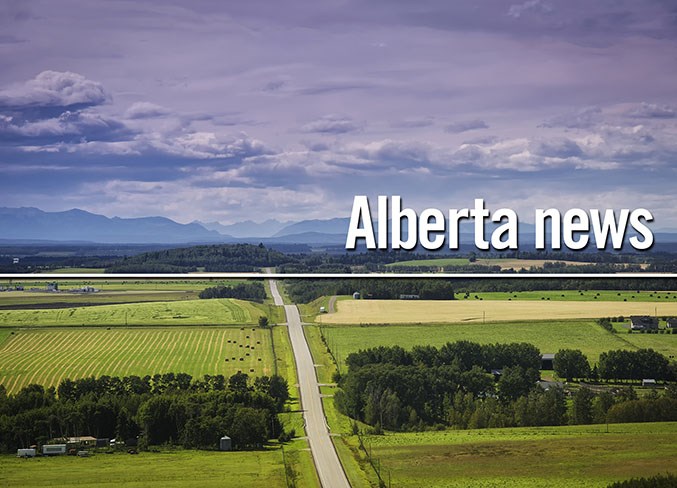Rural municipalities say they are happy with the announcement of federal funds dedicated to improving Internet access in communities across the province.
Internet connectivity in rural Alberta received $300 million in federal and provincial funding dedicated to improving broadband access.
On Thursday the federal government announced it would match Alberta’s previous commitment to spend $150 million to expand access to rural Internet across the province.
Paul McLauchlin, president of the Rural Municipalities of Alberta, said the announcement is the “best Christmas gift ever.”
“The fact is this digital divide ... has left some people behind. It has allowed people to not fulfill their … dreams,” McLauchlin said.
“It's extremely exciting for this to be the first stage,” McLauchlin said.
The president said the number one issue for rural municipalities is not agriculture or health care, but broadband connectivity.
Service Alberta Minister Nate Glubbish was joined by federal Tourism Minister Randy Boissonnault to announce that both governments want to get rural, remote, and Indigenous communities connected to quality Internet services in the next few years.
“In this first stage we can begin making significant progress at eliminating the digital divide," said Glubish.
Glubish said projects will be announced in 2022, but due to global supply-chain issues and the ability for the industry to take on projects, communities might not get connected until 2023 or 2024.
“The pandemic certainly has highlighted the need — accelerated the need — to make this happen,” Glubish said.
Right now, more than 200,000 rural and remote households in Alberta don’t have access to high-speed Internet, Boissonnault said.
Some 80 per cent of Indigenous communities and 67 per cent of rural communities do not have access to Internet speeds laid out by the Canadian Radio-television and Telecommunications Commission (CRTC), Boissonnault said.
The governments expect the partnership to draw in private-sector money to help expand Internet access.
“When our two governments partner with the private sector we could see this investment grow to north of $400 million. This is an extremely important first step,” Glubish said.
Alberta kicked over the first $150 million in July 2021 with the hopes the federal government and private sector would bring in some money.
Roughly 12 per cent of Alberta families across the province, or around 200,000 households, lack the basic speeds the federal government has said are required for adequate Internet service, Alberta Premier Jason Kenney said in July.
While that 12 per cent sounds like a small number, those homes are in rural and Indigenous communities, and matter just as much as the homes in the rest of the province, he said.
In the summer Glubish said it was difficult for rural communities to attract private investment, which often hinges on broadband Internet connections.
“Let me just say that Internet access is no longer a luxury,” Glubish said.
With better access to Internet services, and as working remotely has increased in popularity, Gubish said Service Alberta expects the gross domestic product to grow between $500 million and $1.7 billion, and that the connection will help attract new businesses, create jobs, and build real-estate markets in rural communities.
Glubish said that while it is important for all Albertans to access broadband, he wants to ensure Indigenous communities have access to the Internet and $50 million of the $300 million will be set aside to specifically develop infrastructure in Indigenous communities.
It is estimated it will cost $1 billion to connect Albertans to the targeted Internet speeds set out by the federal government. Boissonnault said the $300 million is just the first phase of the investment.
"You can't build a house in a month, so this is a down payment on a big project," Boissonnault said.
The federal Liberal government launched a Universal Broadband Fund in 2020 as part of its pledge to connect 98 per cent of Canadians to high-speed Internet by 2026, with the remainder slated for completion by 2030.
The goal is to have Canadians at speeds of 50 megabytes-per-second for downloads, and 10 megabytes-per-second for uploads. According to the CRTC, fewer than nine per cent of rural Alberta communities have access to those speeds.
The federal government has set aside $1.75 billion for the projects. Earlier this year the federal government announced it would spend $5.4 million for Internet projects in rural Alberta. Telus committed an additional $3.7 million to the pot, which will connect around 5,000 homes.



